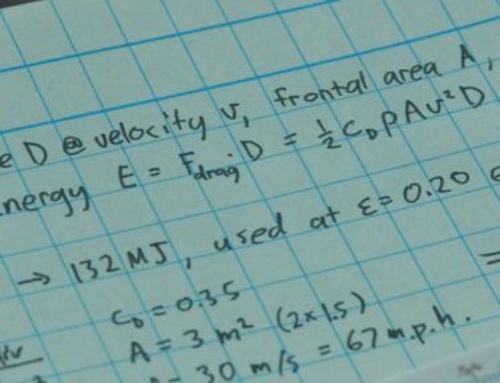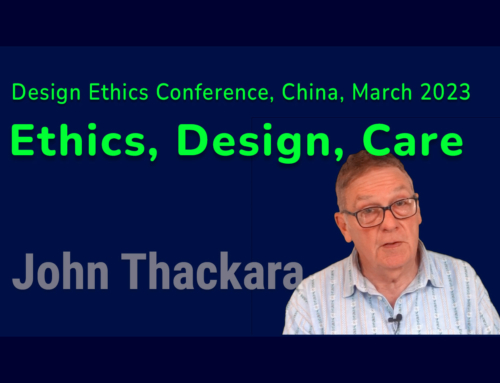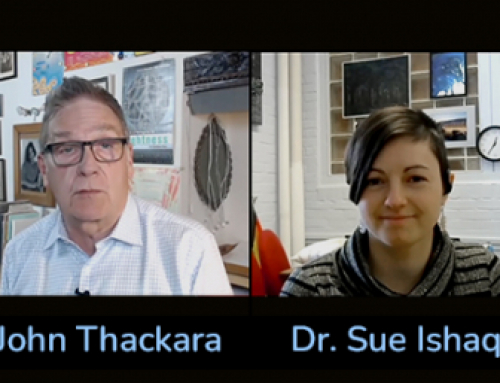(This is a chapter for a book published in 2000 (by 010) on Benthem|Crouwel – the wonderful architects of the -now gone – Netherlands Design Institute and, in their spare time, of Schiphol Airport)
Are buildings a liability?
The eminent Spanish economist Manuel Castells, whose first speech in Amsterdam was by invitation of the Design Institute, has written about the networked economy as “the space of flows” – a brilliant metaphor that helps us understand the changing nature of the workplace. Castells observes that while connections between people can indeed be multiplied by information and communication technologies, understanding still requires space, place and time. It is on that relationship – between connectivity, and meaning – that I focus in this text.
Management of the work environment as a combination of space, place, time and interaction, is moving centre-stage in discussions about innovation, learning, and the knowledge economy. This new focus on work environment raises tricky questions for anyone involved with the building industry. Hard questions are being asked about all the physical assets owned by business – with buildings being singled out as an albatross hanging around their necks. In the extreme view, which is gaining ground, ownership of any kind of asset other than information is becoming a liability. You gain flexibility by not owning physical assets, the argument goes; by concentrating on ownership of intellectual property and moving that around, organisations will do better in the new economy; there is growing pressure on all kinds of organisations to invest more in immaterial than in material assets.
But even albatrosses – and buildings – have their uses.
If it is indeed the quality of interactions with other people, communities and customers that determines the success of a knowledge-nurturing organisation, then buildings can still deliver value. In an economic world dealing in knowledge, the secret of success is the combination of different types of expertise in a productive manner – continuously. Learning, at all levels, relies ultimately on personal interaction and, in particular, on a range of implicit and peripheral forms of communication. Technology is still very far from being able to handle these liminal communications efficiently – but buildings can.
Frozen software?
So real-world spaces remain useful in knowledge work – but not static space. The criticism that products and buildings are ‘frozen software’ is a powerful one. Anything that blocks complex interactions between individuals, communities of practice, and customers, hinders innovation. This criticism has been levelled at our own building more than once – that it isolates and separates the people in it from the real world. It is so beautiful, so perfect, that the outside world pales by comparison. Most buildings are dumb and inflexible. The design institute is not that. But neither is it an easy space to change to suit circumstances: the spaces determine the interactions that occur within them, and are therefore a problem.
Fostering complex interactions – the constantly changing flows of people and ideas that characterise a dynamic organisation – means designing the context of innovation and learning in a new way. In the words of Nobel Laureate Murray Gell Mann, innovation is an ’emergent phenomenon’ that happens when a person or organisation fosters interaction between different kinds of people, and disparate forms of knowledge. A new kind of design – design for emergence- increases the flow of information within and between communities. Such a design process does not deliver finished space or fixed equipment; if a building behaves like frozen software, it won’t work. The re-framed objective of design is to decide what inputs to plumb into a particular context: what questions? which people? what experiential qualities? in what kind of space?
Smart space
The concept of emergence is changing the way our products, systems, organisations and buildings are designed, the way we use them – and how they relate to us. Everything about us is now a combination of hardware and software. The world is already filled with 35 computer chips for every man, woman and child on the planet. A growing proportion of these chips talk to each other thanks to another revolution, wide area computer networking. Ubiquitous computing spreads new forms of intelligence and connectivity everywhere – from the bottom of the sea to the bottom of our shoes. As connected computing suffuses the environment, the notion of designing particular behaviours and qualities into that environment becomes a realistic proposition. When combined with the explosive growth of mobile telephony, the result is a transformation in the way we use time and space.
When new multimedia technologies and internet first appeared, there was excited talk of ‘parallel worlds’ and escape into a ‘virtual reality’. Now the fuss has died down and here we still are, in the same old bodies, on the same old planet. Things have changed – but in subtle and more interesting ways: now the real and the virtual, the artificial and natural, the mental and material, co-exist in a new kind of hybrid space.
Hybrid space, smart space
We tend to think of products and buildings as lumps of dead matter: inert; passive; dumb. But buildings are becoming lively, active, and intelligent. Objects that are sensitive to their environment, act with some intelligence, and talk to each other, are changing the basic phenomenology of buildings – the way they exist in the world. The result is to undermine long-standing design principles. “Form follows function” made sense when products were designed for a specific task – but not when responsive materials, that modify its shape or behaviour, are available. Another nostrum, ‘truth to materials’, was a moral imperative of the modern movement in design; it made sense when products were made of ‘found’ or natural materials whose properties were pre-determined. But ‘truth’ is less helpful as a design principle when the performance and behaviour of materials can be specified in advance.
Once workspaces become suffused with unfrozen software, their designers will encounter another revolution – this one, in the way software is designed. Every day, computer designers at companies like Netscape receive thousands of messages directly from the users of their products. These products are never ‘finished’, but evolve continuously in response to the to and from of messages between users and designers.
It follows that software-suffused environments may soon be subject to online redesign 24 hours a day. What’s more, it may be done for free thanks to yet another revolution, open source. Open source describes the tradition of open standards, shared source codes, and collaborative development, behind software operating systems and languages such as Linux and Perl. Open source is revolutionary because it is bottom-up; it is a culture, not just a technique. Some of the most significant advances in computing – advances that are shaping our economy and our culture – are the product of little-understood hacker culture that delivers more innovation, and better quality, than conventional innovation processes. Open source is one symptom of a powerful world-wide trend towards networked collaboration that companies and specialist knowledge workers, isolated in their professional and institutional ghettos, have been slow to pick up. The faint outline of such a world is already visible at the design institute. The task of tweaking our telephone and computer networks never really stops, and more-and-more expert technical people trade their time spent fixing our systems for benefits we can give them, such as participation in events, or introductions to interesting people.
Amsterdam: strange attractor
The transformation of business processes means that a good geographical location does not always carry as much weight as it once did. But place still matters a lot. All economic actors face new challenges as the distance between the producers of products or services, and their users, shrinks. Sophisticated distribution and logistics systems, computer-integrated manufacturing and design, new materials, and direct marketing, have changed fundamentally what it means to design, produce, distribute or sell a product or service. In this context, location is one more edge that smart entrepreneurs capitalise on.
The location factor is clear as can be in Amsterdam, where our own building is located. Amsterdam’s harbour, its position in Europe, and its connections with the great rivers of Europe, gave it its first gateway status. Soon there was a physical infrastructure for the smooth movement of goods. Now a new infrastructure of wired and wireless networks is adding to the city’s potency, to quote Manuel de Landa, as an ‘attractor’. These cumulative investments in physical and information connectivity have led American information-technology entrepreneurs, in a report by the Aspen Institute, to view Amsterdam as the ideal European base.
In her influential book World Class, Harvard University professor Elizabeth Moss Kantor has analysed what makes a city competitive; she talks about a “golden triumvirate of world class resources: concepts, competence, and connections”. Cities and organisations alike, she argues, should develop these three assets to link their local population to the global economy: to be a place where new ideas can be generated by interactions among a variety of disciplines and cultures; to be a place where some production skills are concentrated; and above all to be a place which, if it does not possess a skill or competency itself, has links to a place which does.
Combining traditional research techniques with new design and user-driven methods, designers are also learning now how to map the way communications flowed in different kinds of communities. These ‘maps’ do not just focus on so-called ‘purposive’ communication – letters to the bank, calling a taxi, a project meeting – but also embrace all kinds of social and cultural communications – the many ways people build relationships, articulate their needs and fears, and interact informally with friends, family, carers, officials and so on. The dynamic of such projects is to focus on the people themselves, their needs, their habits, their frustrations, their daily life. Knowledge management is the new imperative – driven by the shift away from a world of goods and services towards one of information and relationships. The keyword here is minds in the in the plural – and in particular the capabilities of groups. Traditional workplace design emphasised the individual worker; space and equipment for teams has more recently been given attention. Workplace design that fosters continuously changing and complex knowledge relationships and flows is the new priority.
Speed is God, Time is the Devil
Space and place are important to he way an economic entity manages time. Speed is God, Time is the Devil”, goes Hitachi’s company slogan. But it’s hard to accelerate, or change direction, when you’re big. For many big companies, too much dispersal of places and people is becoming counter-productive. “Mobility is starting to backfire”, says Lufthansa, without a blush. The relationship between workspace design and mobility is a paradoxical one. Nothing would appear to be more immobile than a building – but new workplaces can adapt themselves to cope with constantly changing configurations. The designers of ‘SimCity’ have, intriguingly, tied up with the SantaFe Institute to offer ‘design for emergence’ simulation tools for – among other intriguing possibilities – a ‘SimSainsburys’. Large organisations can emulate the dynamism and speedy decision-making typical of smaller firms by using ICT space and real space in new combinations.
The relationship between information technology and social experience (especially in the areas of art and entertainment) is already a very close one. Current trends include the merging of IT and Television technologies (e.g. in digital and interactive TV), the growth of the computer games industry and the use of multimedia and interactive technologies to create novel artistic installations and exhibitions. However, even though there has been a recent trend towards greater interactivity between individual viewers/users and the technology, these experiences are, on the whole, socially isolating ones. For example, Interactive TV does not allow different viewers to directly participate in an event or to interact with one another and most computer games are still single user experiences (with a few exceptions and even these only support a very few users at a time). Compare these with traditional cultural forms such as theatre, sports events, concerts, fairgrounds and exhibitions, all of which provide rich and vibrant settings for social interaction and which would be reduced in their impact with the active presence of many participants.
We need to consider how new electronic forms of experience might enable social interaction between participants. This is necessary both from the commercial perspective of creating new markets for entertainment applications and also from the socio-political perspective of countering the negative social impacts of current media and entertainment technologies.A specific goal is to encourage making the inhabited information spaces available, useful and enjoyable for groups of worker-citizens with heterogeneous access to the network, in bandwidth as well as presentation and interaction devices.
The use of large-scale display technologies (e.g. projection systems, domes and Caves) may enable the provision of public interfaces to social computer systems. Such interfaces may eventually allow users to be immersed without being encumbered by equipment. They will also be inherently sharable – several people may use the same interface at the same time. However, present technologies fail to support meaningful interaction between the crowd of observers and the shared display: typically, one person ‘drives’ and the others merely watch. Research is required into techniques whereby groups of people can meaningfully interact with a shared display in a relatively easy, flexible and unencumbered manner.
The range of disciplines with an impact on workplace design is widening. Psychologists, for example, describe as ‘catatonic space’ an environment that is so devoid of the contextual clues (daylight, heat, wind etc) that we fail to make sense of where we are. We know that buildings can be physically sick; now, it seems, they can be emotionally dysfunctional, too, and will need the help of shrinks. Theatre people are getting in on the act: the Walt Disney Company employs “imagineers” to ensure that its supremely artificial environments do not become catatonic. We are beginning to see something similar emerge in the offices of knowledge-based companies. ‘Office clowns’, ‘animateurs’, ‘showbusiness impresarios’ and other jobs whose role is to generally ‘liven the place up’.
Innovations in the workplace will migrate steadily to the domestic environment – indeed, the two spaces will merge. Interactive communication networks linking public and private spaces will have a considerable impact on the future of urban functions, local communications and lifestyles. Such technologies will change qualitative and quantitative aspects of relationships between household members, as well as the role and function for the home and its relationship to the wider environment. Many IT companies now view the home as the next site for technological development. The world market for ‘domestic’ information processing, communications, interfaces and control units is already running at five billion ECU’s per year for new homes and 10 billion ECU’s per year for upgrading old homes.
A knowledge centre that works
Ultimately, however, work is not just about earning money to buy products. “We work not just to produce”, said Eugene Delacroix, “but to give value to time”. Work has social, cultural, and personal, as well as economic meaning. It is that meaning that the design institute building so powerfully fosters. Although it is not used as a public museum, the Institute’s building is intensively used by more than 20,000 people each year as a knowledge and activity centre. The building hugely impresses every visitor, and has contributed to the Institute’s international standing as a leading-edge organisation. The Fodor has become a busy knowledge centre rather than a cultural or leisure destination. The building stimulates innovation, but is not dedicated to the passive consumption of design spectacles by hordes of citizens and tourists. In the years to come, we will intensify use of the building in new ways: as a meeting place, for presentations, as a communication centre, as a laboratory.
ends




